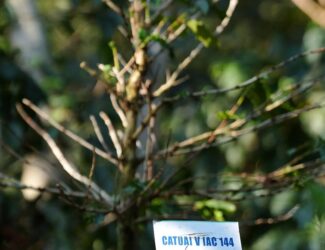
Volcanology is revolutionizing the coffee industry
A trio of experts, comprising two volcanologists and a chemist, have revolutionized the world of espresso by mitigating static charge on coffee grounds. This innovative breakthrough, unveiled through recent research at the University of Oregon, involves introducing a dash of water to coffee beans before grinding. The process significantly reduces the microscopic clumping of grounds during brewing, ensuring a more uniform and efficient water flow through the packed coffee grounds.
Dr. Coffee, colloquially known as UO chemist Christopher Hendon, expressed the importance of consistent water flow for brew methods like espresso. This breakthrough minimizes cup-to-cup variability and allows baristas to use slightly less coffee, leading to a reduction in waste. The implications extend from bustling coffee shops to home brewers and large-scale coffee producers, promising positive impacts on both economic and environmental fronts.
The academic significance of the research lies in the revelation that the accumulation of charge on coffee grounds is influenced by their moisture content. This dynamic property means that the static charge can be deliberately controlled, providing a newfound ability to enhance or diminish it as needed.
Published on Dec. 6 in the journal Matter, the study originated during a casual coffee session at Hendon’s lab, where volcanologists Josef Dufek and Josh Méndez Harper drew parallels between the physics of coffee and volcanic plumes. This interdisciplinary collaboration yielded insights into particle-scale physics, demonstrating the shared interactions between materials in different states of matter.
Hendon’s team repurposed a tool used for measuring electric charges on wildfire and volcanic ash to analyze the static charge on coffee particles. They discovered that the internal moisture content of coffee beans plays a significant role, with dark roast coffees exhibiting more clumping due to lower moisture levels. The addition of water pre-grind effectively eliminated the static charge, resulting in a 10 percent increase in coffee yield.
For baristas, this technique offers a valuable strategy to minimize waste, as fewer grounds are left behind in the grinder, and water moves more evenly through the packed grounds. Hendon suggests that static charge in coffee arises during the grinding process, influenced by the internal moisture content of the beans. This opens the door for potential control by adjusting roasting temperature and time.
While coffee enthusiasts celebrate this advancement, Dufek and Méndez Harper see connections to their research on volcanoes. The study of how coffee particles break during grinding serves as a proxy for understanding the physics of fracture in volcanic ash particles. Both coffee and volcanic ash particles can be highly charged, influencing not only the quality of espresso but also volcanic eruption behavior.
Funded in part by the Department of Energy, the National Science Foundation, and NASA, this collaborative effort exemplifies the value of community-driven research, showcasing how a simple coffee hour gathering can lead to groundbreaking insights that resonate across diverse fields.



